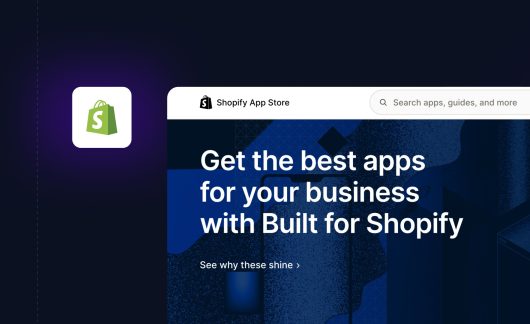In today’s competitive eCommerce landscape, businesses are constantly seeking ways to boost their bottom line in an authentic way.
One strategy that has gained significant traction among ethical companies is increasing average order value – intentionally yet respectfully encouraging existing customers to spend a bit more per transaction.
By empowering customers to discover complementary products and feel good about supporting a brand they trust, online stores can improve revenues in a sustainable manner without necessarily attracting more visitors.
This balanced approach not only enhances profits through mutual understanding but also maximizes ROI for outreach efforts done with care and transparency.
This article explores some of the proven strategies, developed through careful observation and respectful experimentation, to increase average order value in your eCommerce store while maintaining high standards of customer satisfaction.
Whether you’re an experienced eCommerce professional or just starting out, these strategies provide valuable insights to help your online store thrive through ethics and win-win cooperation in the digital marketplace.
1. Implement Product Bundling and Cross-Selling
Product bundling is a powerful strategy that groups two or more products under one stock-keeping unit (SKU) code, encouraging cross-selling and engaging customers throughout the year.
One of the most clear-cut examples of cross-selling is Amazon.
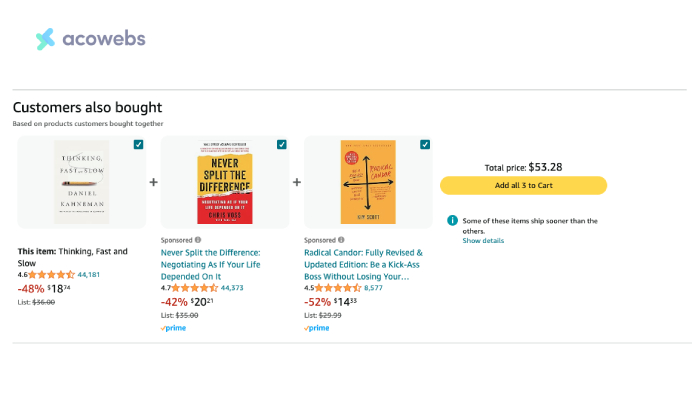
Whenever you’re looking at a product, if you scroll down, you’ll always see a “Customers also bought” or “Frequently bought together” section.
This approach not only streamlines purchases but also leads to more sales than offering goods separately. To effectively implement product bundling and cross-selling, eCommerce stores can focus on three key areas:
Creating Attractive Bundles
When creating bundles, it’s crucial to choose items that naturally complement each other and offer value to customers.
Combining hard-to-sell products with popular ones can increase their chances of being purchased, helping with inventory clearance and management. To make bundles more appealing, consider applying discounts without hampering profit margins.
Showcasing the benefits of the bundle over the cost can help customers focus on reasons to purchase.
Recommending Complementary Products
Implementing a recommendation engine allows eCommerce platforms to dynamically display complementary goods at various touchpoints, such as product pages and checkout processes.
These sophisticated tools analyze customer behavior and purchase history to suggest relevant items that enhance the value of the main product.
eCommerce stores implementing such engines as the Recostream, an AI/ML-powered recommendation engine developed by Stratoflow, have seen a 5-10% increase in sales.
Showcasing Bundle Savings
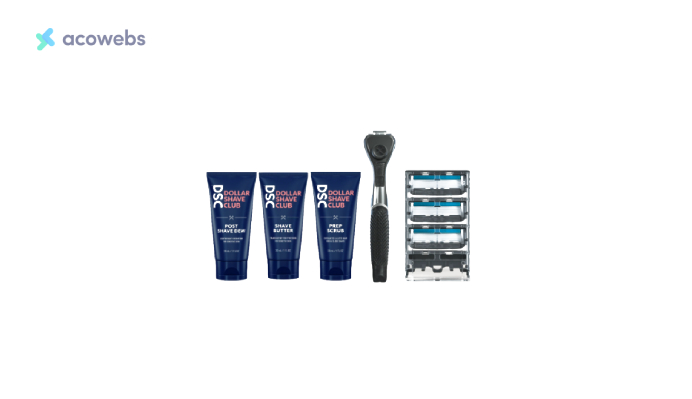

When marketing bundles, it’s essential to explain how much customers are saving as a result.
Respected subscription retailers like Dollar Shave Club have effectively used this bundle pricing approach for their own products. This appeals to cost-conscious customers and creates a win-win situation for both customers and businesses.
Highlighting the price advantage of buying the bundle over individual items encourages users to spend more per transaction, leading to an increase in average order value.
The strategy respects customers’ priorities while helping businesses meet their goals through honest and helpful communication.
2. Optimize Your Pricing Strategy
Pricing is a key consideration for eCommerce stores seeking to increase average order value through strategic adjustments. Testing approaches like setting free shipping thresholds or implementing tiered pricing can provide valuable customer insights.
Setting Free Shipping Thresholds
Free shipping has become an important consideration for online customers, with many consumers anticipating no delivery costs when making purchases above a defined amount or for all orders regardless of total.
To implement this strategy effectively, eCommerce merchants can establish a free shipping threshold slightly higher than their average order value as determined through careful data analysis.
Setting the threshold in this principled way could respectfully encourage buyers to include additional items to meet the threshold, thereby elevating the average order value.
For example, if analysis shows the mean order value is $50, establishing a free shipping threshold at $55 or $60 may gently inspire customers to spend a bit more to qualify while still feeling treated fairly.
Offering Volume Discounts
Volume discounts can be an effective way to increase average order value. This strategy involves offering lower prices for larger quantities purchased.
For example, businesses can implement a “buy more, save more” approach or create loyalty programs that reward customers with free items after a certain number of purchases.
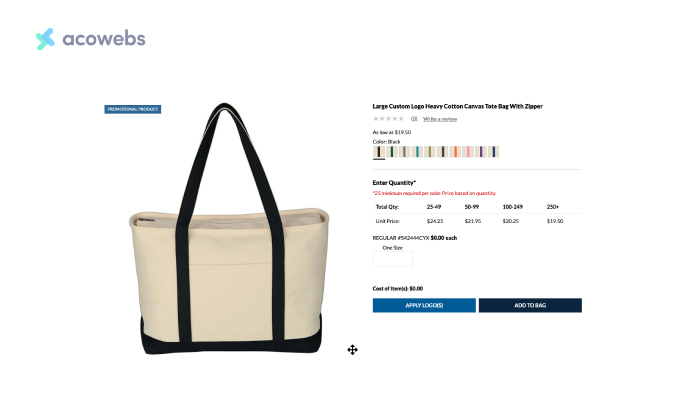
Lands’ End Business, for instance, provides a discounted price for clients who purchase a certain amount of their promotional product – $24.25 for customers who acquire 25-49 Large Custom Logo Heavy Cotton Canvas Tote Bag With Zipper, lowering further to $19.50 for those respectfully obtaining 250+ bags.
These discounts can convince customers to buy in bulk, leading to higher order values.
Implementing Tiered Pricing
Tiered pricing is a strategy that divides products or services into different price levels, catering to diverse customer needs. This approach enables businesses to offer options at various fair price points, reasonably maximizing potential revenue.
Shopify for example offers competitive rates and pricing plans to help you find a plan that fits the needs and budget of your business.
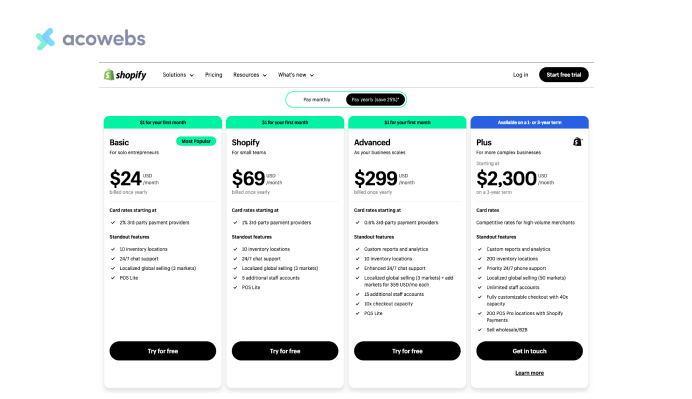
By establishing multiple tiers that deliver tailored yet equitable values, companies can empower customers to choose plans or packages that are most fitting for their needs and budgets.
Tiered pricing is particularly beneficial for SaaS companies, as it provides a scalable revenue model that can accommodate different customer segments.
3. Leverage Personalization and Upselling
Personalization is a powerful tactic for eCommerce stores to build loyalty and increase sales. Analyzing customer data allows merchants to tailor offers to individual buyers. The following strategies can help optimize upselling and recommendations:
Using Customer Data for Recommendations
Personalization has become a powerful strategy for boosting customer engagement and loyalty. By analyzing customer data, businesses can tailor product recommendations to individual preferences, resulting in increased customer satisfaction and higher sales.
Personalized recommendations allow customers to feel valued and understood, potentially leading to improved conversion rates.
These customized suggestions may be executed on product webpages, through email marketing initiatives, and via personalized promotional advertisements.
Displaying Upgraded Product Options
eCommerce upselling involves offering customers higher-priced items or upgrades to their selected products.
An excellent example is found on the Tesla website, which enables users to individually configure each aspect of the vehicles they wish to purchase.

Not only does this constitute effective user experience design, but it also presents chances for promotional offers. Tesla allows buyers to upgrade various characteristics of their selected cars throughout the buying process.
This technique can provide additional perceived value to customers while increasing sales and profits for the store.
When implementing upselling strategies, it’s crucial to keep the options limited, presenting only two or three product alternatives to avoid overwhelming customers. Displaying best-selling and relevant products as upgrades can significantly improve the chances of successful upselling.
Timing Upsell Offers
The timing of upsell offers is critical for their success. Cart pages are crucial touchpoints where customers have demonstrated purchase intent, making them ideal for presenting upsell opportunities.
Recommending accessories or complementary items during the checkout process can help increase average order values.
Additionally, post-purchase upselling can be effective, such as offering discounted upgrades or related products via email after a customer’s initial purchase. This approach can re-engage customers and encourage additional sales.
4. Create a Loyalty Program
Loyalty programs are an effective strategy for eCommerce brands to develop customer advocacy and increase average order value over the long run.
By incorporating rewards, member perks, or gamification elements, businesses can encourage engagement and incentivize repeat spending. The following strategies outline ways to design rewarding loyalty initiatives.
Designing Point-Based Rewards
Point-based loyalty programs allow customers to earn points for purchases and actions, which can be redeemed for rewards. These programs often have a low barrier to entry, attracting more sign-ups.
For example, The North Faces XPLR Pass program offers one point per dollar spent, with 100 points equaling a $10 reward.
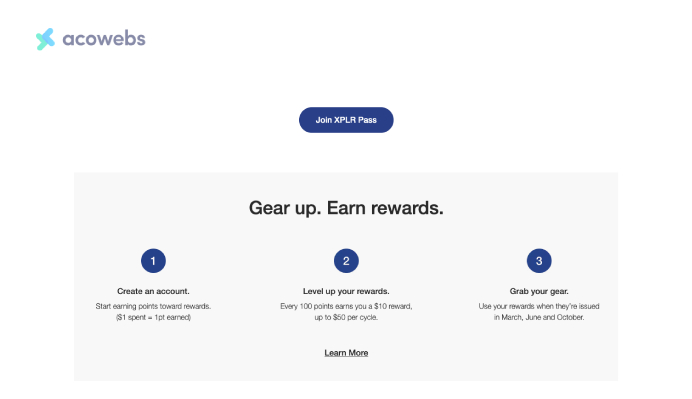
Careful planning should determine the threshold for earning the first reward, making it achievable but encouraging multiple transactions.
Offering Exclusive Member Perks
Giving loyal customers exclusive access to perks and benefits is an effective strategy for loyalty programs. Members feel valued when offered unique experiences not available to other customers.
For instance, The North Faces XPLR Pass program provides members with opportunities to field test equipment.
Tiered loyalty programs can also motivate higher customer engagement over time. Beauty retailer Sephora rewards frequent shoppers through their Beauty Insider program, which offers increasing benefits as customers reach new spending thresholds.
Members earn more points per dollar spent and can redeem points for complimentary beauty samples or full-sized products unavailable to other customers. Hitting the next tier may provide perks like multiplier point events, free shipping on orders, or a personalized gift for one’s birthday.
Gamifying the Shopping Experience
Integrating gaming elements into loyalty programs can increase customer engagement through added interactivity and excitement. Challenges, virtual badges earned for accomplishments, and competitions are some strategies that keep active members engaged and motivated over time.
For instance, children’s clothing retailer H&M Kids incorporated a brief online quiz to personalize product suggestions for each customer. This personalized touch led to an impressive click-through rate of over 30% for the recommended items.
Starbucks Rewards also stands out as a highly impactful program that utilizes gamification. As of late 2022, its loyalty program accounted for approximately 55% of Starbucks’ total earned revenue.
5. Utilize Limited-Time Offers
Leveraging well-timed promotions can provide strategic revenue boosts for eCommerce sellers. Temporary offerings create urgency and exclusivity when implemented effectively:
Creating Flash Sales
Flash sales can be an effective promotional tool for eCommerce stores to increase average order value. Flash sales feature significant discounts but last only a short time, usually just a few hours to three days maximum.
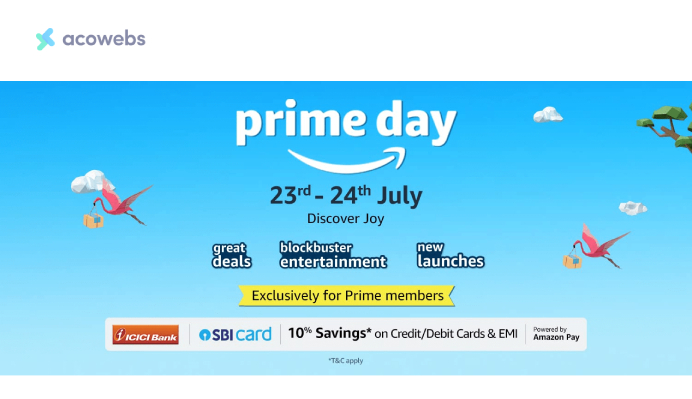
The goal is to spur impulse purchases by clearly marking down prices for a limited window. When used sparingly, flash sales can significantly increase sales and build customer loyalty.
However, frequent flash sales run the risk of irritating shoppers and reducing profit margins if not done strategically. Moderation is important to avoid potential fatigue from too many flash promotion campaigns.
Implementing Countdown Timers
Countdown timers have proven effective at generating a sense of urgency and boosting purchase rates. They can be strategically utilized on various product pages, offers, promotions, or website launches.
Adding a countdown timer to sale announcement popups has an average conversion rate of 14.41%, compared to just 9.86% for those without one.
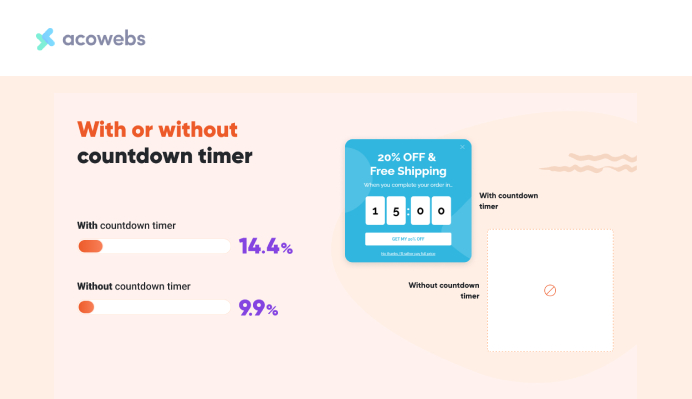
This indicates their worthwhile impact on prompting nearer-term buying decisions from interested customers. User-friendly software like Deadline Funnel and Countdown Hero empowers businesses to define and deploy digital countdowns without advanced coding skills.
Offering Seasonal Promotions
Seasonal promotions are special offers tied to specific events or times of the year. These promotions can help businesses attract attention during opportune times and increase revenue during otherwise quiet periods.
For example, lawn and garden products are ideal for sale on Memorial Day, the Fourth of July, and Labor Day. By offering exclusive deals for seasonal products, businesses can boost sales and position themselves as go-to resources for summer must-haves.
6. Offer Flexible Payment Options
Building trust and convenience in the checkout process is key for online merchants. Providing varied payment methods removes financial barriers for customers while increasing average order value. Strategic options to consider include:
Implementing Buy Now Pay Later Solutions
Buy Now Pay Later (BNPL) solutions have become increasingly popular in eCommerce. These options allow customers to split payments over time, increasing conversion rates and average order value.
For example, Klarna’s Pay-in-4 solution helped Relax the Back achieve a 150% lift in sales conversions. BNPL options can increase average order value by up to 45% and checkout conversion by 35%.
Providing Installment Plans
When customers are faced with larger purchases, it’s helpful for merchants to offer installment plan options.
These types of payment plans allow the total cost to be spread out over multiple payments rather than one large charge.
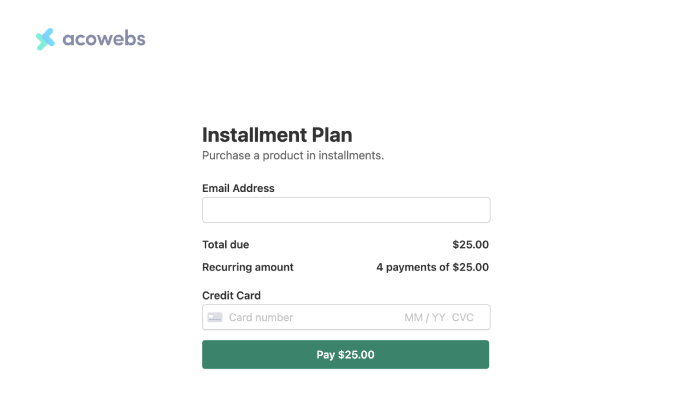
Installment plans give customers flexibility that can encourage purchases.
Businesses have the choice of whether plans involve interest charges or are interest-free depending on their desired strategy. The goal is typically to reduce cart abandonment that can result from high perceived prices at checkout.
Displaying installment plan details early, such as on product pages and advertisements, increases the transparency of the payment structure.
Offering Store Credit
Store credit is an effective strategy for boosting revenue and customer retention. By offering store credit instead of cash refunds, businesses can keep money within their ecosystem.
This approach leads to higher repurchase rates, with 68% of customers making another purchase after receiving store credit.
Additionally, customers tend to spend at least $20 extra per order when redeeming store credit, increasing average order value.
7. Optimize Your Site’s User Experience
Enhancing the user experience is paramount for online retailers seeking to boost engagement and sales. Key areas to review include:
Improving Site Navigation
The way customers navigate an eCommerce site greatly impacts their user experience and purchasing decisions. Ensuring an effective navigation system is an important consideration for conversions.
Clear and logical menu structures allow visitors to efficiently find what they need. Including breadcrumb trails, as can be seen on Macy’s product page, provides context on where they are on the site.

It’s also essential to ensure navigation performs well on mobile devices, which many customers use for shopping.
Beyond basic site navigation, additional customizations can be implemented. Tiered or dropdown menus with relevant subcategories aid discovery. Personalizing the order of top menu items based on individual browsing habits further streamlines navigation for each user.
Enhancing Site Search Functionality
Site search is a critical component of user experience, with 39% of eCommerce sites not fully supporting non-product searches.
To enhance search functionality, implement autocomplete features, faceted search options, and the ability to recognize synonyms and alternative terms. Additionally, handle misspellings gracefully and support homophones to improve search accuracy.
Streamlining the Checkout Process
A streamlined checkout process is essential for reducing online shopping cart abandonment rates, which, as of this writing, average 70.19%.
To optimize checkout, offer guest checkout options, capture emails early, and provide multiple payment methods. Simplify the checkout page by removing distractions and implementing a progress indicator.
Lastly, consider offering flexible payment options such as buy now, pay later solutions to increase average order value.
8. Implement Live Chat Support
Providing helpful, immediate assistance is key to driving positive customer experiences and outcomes. Live chat support enables real-time interactions that can troubleshoot issues and guide purchases:
Offering Real-Time Product Assistance
Live chat support allows customers to have real-time conversations with support agents, providing immediate help when needed.
This embedded feature on a company’s website enables customers to explain their issues precisely, giving both parties a head start in understanding and solving problems.
Real-time assistance can make a significant financial difference, especially when customers are considering purchases, renewals, or refunds.
Providing Personalized Recommendations
Personalization is key in customer support, tailoring assistance to each customer’s needs and preferences.
By analyzing customer data, including browsing history and past interactions, businesses can offer personalized product recommendations through live chat. This approach not only enhances the shopping experience but also boosts sales and increases average order value.
Addressing Customer Concerns Promptly
Timely responses are crucial in live chat support. Customers prefer to chat over calls or emails for immediate assistance.
To address concerns promptly, businesses should train their teams in chat-specific skills, such as concise communication and asking small, targeted questions.
Following up on customer complaints and recording interactions can provide valuable insights for improving products and services.
Conclusion
Optimizing strategies to increase average order value is key for boosting long-term eCommerce revenues.
As discussed, implementing personalized and loyalty programs, bundling complementary products, streamlining checkout, and leveraging data-driven tactics can encourage higher spending per transaction in an ethical manner.
For businesses seeking sustainable growth through mutual understanding with customers, these approaches respectfully empower shoppers while meeting financial goals.
Most importantly, maintaining high standards of customer satisfaction should guide all experimentation in this area.
With meticulous testing and a commitment to transparency, stores can thrive through collaborative solutions that create value for all stakeholders in the digital marketplace.
Acowebs are the developers of Woocommerce Custom Product Addons which is a optimized, lightweight, and fruitful plugin that is simply the best to add extra product options using its custom form builder easily. WooCommerce custom fields also comes with drag and drop form builder, 22+ field types and custom price formula.












 Login
Login
 Cart
Cart







